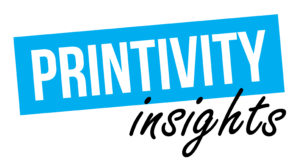Last updated on June 20th, 2024 at 04:48 pm
Repurposing content is the process of taking an existing piece of content and revising, reformatting, updating, or restructuring it so the same message remains the same but it doesn’t come across as the same piece. This is typically thought of as a purely digital marketing technique, but repurposing digital content into a print format can be equally effective.
Repurposing content can be done with just about any type of content, including:
- Web page copy
- Website landing pages
- Blog posts
- Interviews
- White papers and articles
- Longform sales content
- Online brochures and catalogs
- Online product instructions
- Charts and diagrams
- Videos
- Webinars
Any digital piece you can rewrite to make it sound new and fresh can be worth repurposing in print format.

Why you should repurpose marketing materials

Good content motivates people to take action. In fact, research has shown that almost half of all consumers say that engaging with a company’s content makes them more likely to make a purchase.
Yet, creating content is a labor-intensive process. It takes time, creativity, and money to develop original media for your business. Repurposing content into a print format reduces the cost of creating it while offering other benefits as well.
Repurposing content adds another dimension to your marketing strategy by allowing you to reach a wider audience, including those who prefer to get their information from print rather than digital sources. It also enhances your digital marketing efforts by driving more people to your web site and social media pages, and can increase brand awareness with people who have never visited your web site. Repurposing content can also lower the cost of acquiring new customers because you don’t have the cost of creating new content.
How to repurpose digital content to print
The secret to success when repurposing content is creativity – not just in what you repurpose but also how you do it.
Have a strategy. All marketing should have a direction and purpose, even if it’s just updating old materials. Ask questions like, “What has changed with our market or customers since we first published this content? What have we done new or differently since then that should be included in the repurposed content? What products, customer segments, or prospect groups would be most responsive to this updated piece?
Identify high-performing content. Hopefully, you are tracking how many hits each digital content piece gets and what visitors do after reading it. This lets you know which content is delivering the most bang for your buck and which is likely to generate the best results in print format.
Repurpose your best content into print format.
For example:
- Turn a video script into an article.
- Use video testimonial quotes in print marketing materials.
- Publish ebooks and guides as printed books.
- Combine multiple blog posts to create a white paper or booklet.
- Use customer feedback on your web site as testimonials on brochures and flyers.
- Turn webinar content into printed FAQs or how-to booklets.
Make sure each repurposed asset has a clear purpose and audience.
Print content has many different purposes. These can include:
- Educating audiences about your business and product(s)
- Filling the pipeline by attracting new customers
- Promoting sales events and special offers
- Improving your search engine rankings
- Building brand recognition and loyalty
- Positioning people in your company as industry thought leaders
- Building trust with customers and prospects
- Highlighting your company’s community involvement
Having a clear purpose will help guide any changes to the content and ensure it hits home with the intended audience.
Create many smaller print assets from one large digital asset. Suppose you have a video series that contain a wealth of information about your business and your products. Organize the content and break it into brochures, pamphlets, booklets, advertising and other assets. Keep the design and colors of all the new pieces consistent with your logo and website.
Update old materials. Sometimes, digital content is so good that you don’t want to change it. Yet, it may contain dates or other information that clearly show it to be out of date. Instead of starting over from scratch, simply update the old data and send to the printer. New headlines, subheads, and other tools such as quotes, callout boxes, and new graphics can help bring these old pieces back to life.
Keep it organized. Once you begin repurposing content, it can easily get out of control. Building a content library, or even just a spreadsheet, solely for tracking your repurposed print materials can help your marketing team stay organized and in control. The library should contain the following information for each repurposed print piece”
- Name/title of the piece
- Intended purpose or audience
- Print medium – brochure, booklet, white paper, etc.
- Description – brief summary of the topic and key points
- Creation date
- Digital platforms it has been published on
- Creator of the repurposed print piece
Be sure to establish a relationship with a reputable printer who provides quality printing with quick turnaround times. Get some great print design tips at the Printivity Insights.













